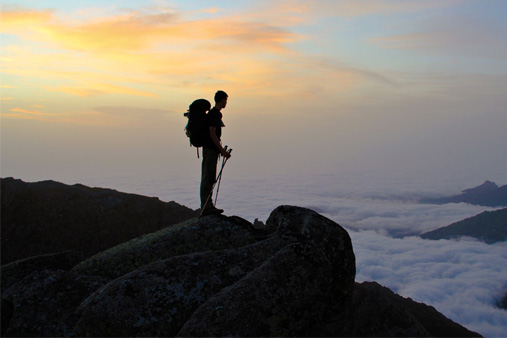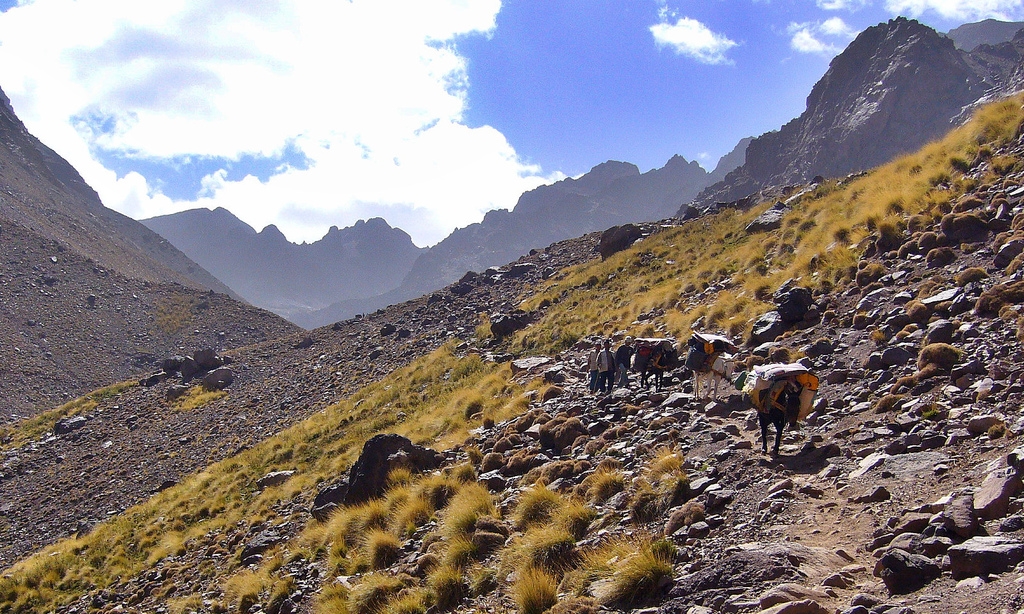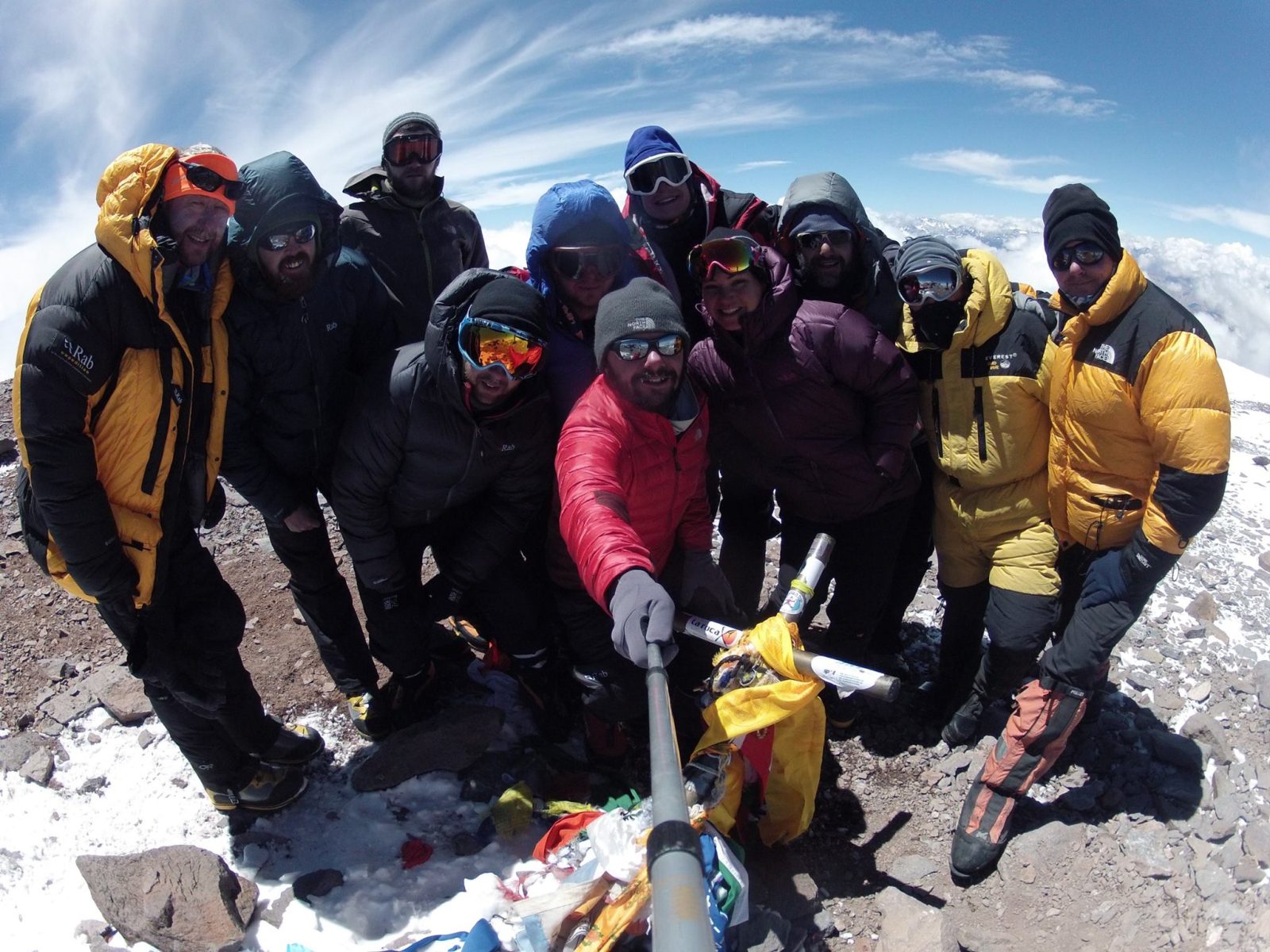
Trekking Boot Advice
CHOOSING THE BEST HIKING BOOTS
On all treks and on some trekking peaks the most appropriate form of footwear will be sturdy walking boots. Among the advantages of boots over shoes are that they provide support to your ankle on uneven terrain, allow the use of their stiff edges on steep or slippery terrain and also that they resist the ingress of water, dust and stones over their top edge.
The decision on which ones to buy needs to be informed by many factors such as how often you are likely to use them, in what terrain you are likely to use them, the shape of your foot and inevitably the price. However, one factor that should never be compromised on is the comfort and fit of the boot. It will not be long into a trip with ill-fitting boots that you will be aware of their shortcomings.

In boot design and construction there are many factors to look at;
- a fully integral ‘sewn-in’ tongue is essential for waterproofing
- gore-tex or equivalent lining for waterproofing
- a tough ‘toe-box’ to protect your toes
- protective rubber rands around the toe and sometimes heel will help your boots to last
- cushioning on the sole to help reduce sore feet at the end of the day
- robust lace loops
- stitching lines are natural weak points so not too many of these and not in locations where they will wear
- a stiff sole which has a shank running through it, most boots use Vibram soles for this support
You may also consider changing the footbeds or adding an insole, especially if you have a high arch. You will, of course, need to make this decision at the same time as buying the boots in order to get the fit correct.
To stand the best chance of getting the best hiking boots that fit you well you need to visit a shop with a range of manufacturers and models, certain boot brands commonly produce boots of a certain shape, ie. a narrower or wider fit. If your feet are of a certain shape it is worth identifying the most appropriate manufacturer for you.
In addition, many of the more specialist retailers will have staff who are trained to take a number of measurements of your foot in order to advise the best hiking boots for you. Take your time and try a number of boots and don’t feel pressured to buy a boot that doesn’t feel right, you will almost certainly regret it.

When fitting your boots, remember to wear the socks that you would wear when walking. You need to ensure that when walking you do not experience any ‘heel-lift’ inside the boot and that there is sufficient space around your toes for you to wiggle them. Any tighter than this and it is likely that they will either rub and give you blisters or be so constricting as to restrict the blood supply and lead to cold toes.
Once you have decided on the best hiking boot for you, you need to wear it in. Most stores will allow you to return or exchange a boot as long as it shows no signs of wear and has not been used outside. Therefore it may be worth plodding around the house and climbing the stairs a few times to make double sure they are right.
Once you are happy you need to wear the boots as much as possible, preferably on longer day trips on similar terrain to the actual trip. This can also help to wear-in your feet as much as the boots! You can then try out some different strategies for avoiding discomfort such as blisters. This may include taping your heels as a preventative measure or using liner socks.

Below the snowline, it is possible to use B0 graded hiking boots as described above. Make sure you opt for a boot with stiff shank or Vibram sole that provides some good support to the foot but does still allow some bend. Popular trips which we offer where a good quality hiking boot is necessary include Mount Elbrus acclimatisation hikes, Mount Kilimanjaro, Mount Kenya and the treks in Nepal and Morocco, to name a few.
However, on mountaineering expeditions above the snowline, where crampons will be used, it is necessary to have boots that are graded as B1 or higher depending on the altitude and conditions. The higher you go and the steeper and more technical the ground, the more you move into mountain boot territory. Hiking boots are okay to use for short sections of snow patches, and it would be a good idea to take a pair of mini spikes for these sections.
Book Your Adventure of a Lifetime Now
Discover our trips to other Countries
Adventure Alternative Articles

12 MONTHS, 12 MOUNTAINS
Climbing Calendar Ready for World Mountain Day In celebration of World Mountain Day, we've created a calendar for the year to make it easy for...

Mount Aconcagua Trip Review
January 2016 This year we had a team of twelve clients from four different countries – Iran, Ireland, England, South Africa and Argentina –...

Alcey’s Survival Skills Course at Lupa Masa Jungle Camp
SURVIVAL SKILLS COURSE AT LUPA MASA JUNGLE CAMP | ADVENTURE ALTERNATIVE In celebration of International Rural Women’s Day, we’re talking...